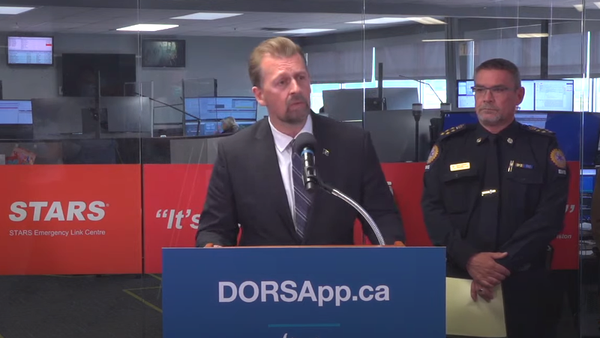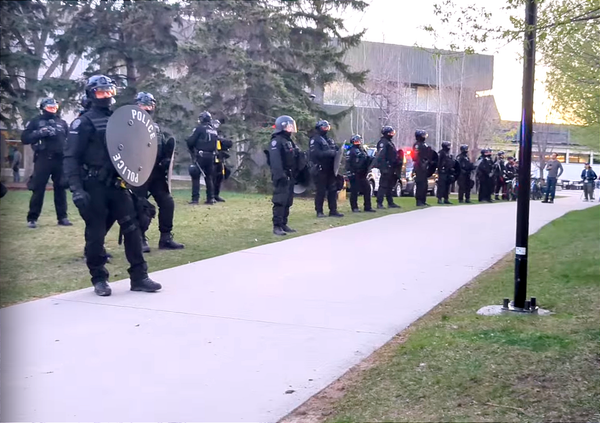Safe supply is not driving drug deaths in BC: coroner report
Drug poisoning deaths continue dropping in BC, following a trend since decriminalization. Meanwhile, zero youth deaths occurred from hydromorphone alone between 2017 and 2022.

Two important reports were just released by the BC Coroner’s Service — apologies for the abruptness of the writing but I’ll emphasize speed over structure.
The first report is the monthly unregulated drug deaths summary.
Unregulated Drug Deaths in BC
A critical point highlighted in the Summary of the document: “There is no indication that prescribed safe supply is contributing to unregulated drug deaths.” Several other trends are worth noting:
May 2023 followed a four-month declining trend to the lowest drug poisoning mortality total since June 2022. April had a spike in deaths but this dropped significantly again in May.
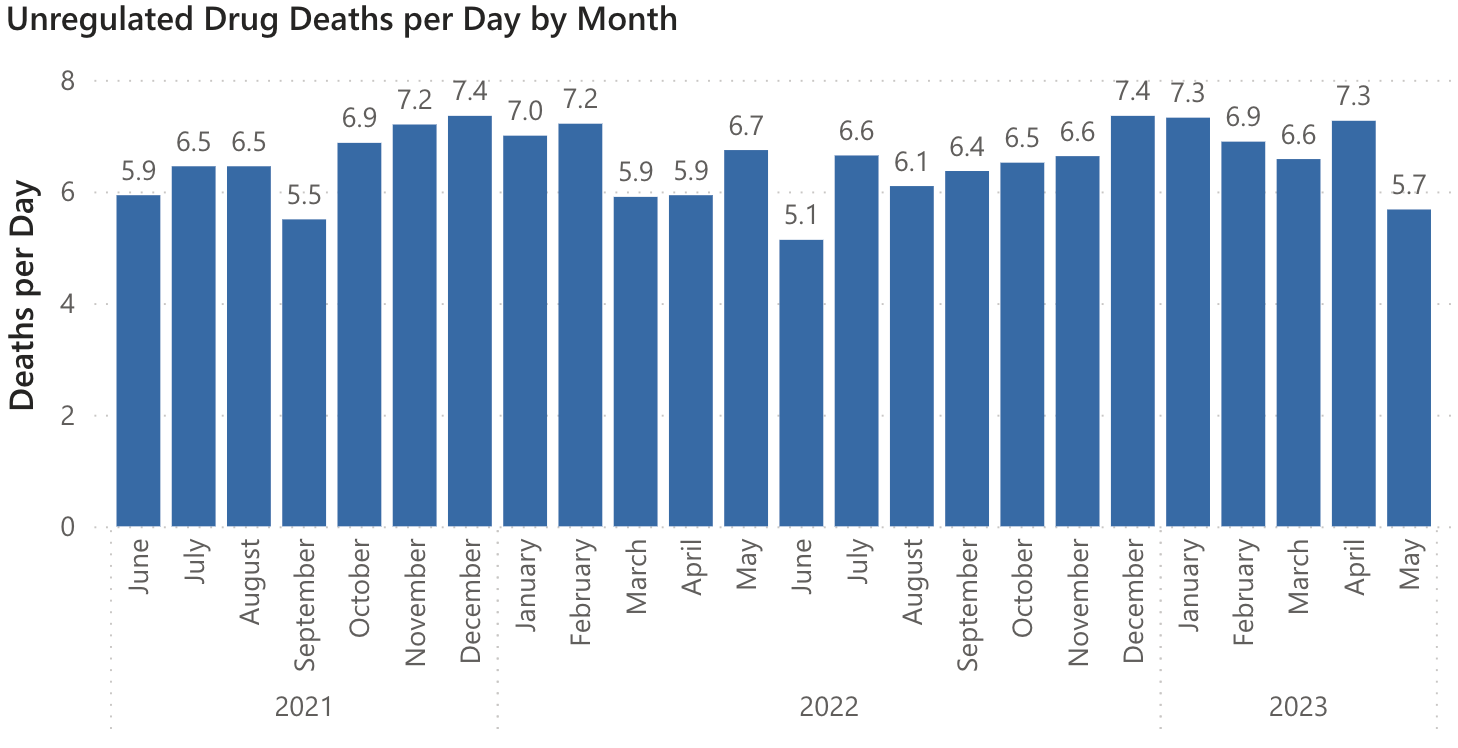
BC appears to be on a downtrend in drug poisoning deaths that coincides with the decriminalization of simple possession that began on January 31. Source: BC Unregulated Drug Deaths Summary. We know that overdoses increase in the weeks following a police bust, so it is possible that the downtrend that began in February follows decriminalization of minor drug possession. I’ll warn that it’s too early to say if these are linked, but for comparison, Alberta is seeing a sharp increase in drug poisonings over the same period, with decriminalization nowhere in sight. In Alberta, quarterly EMS dispatches increased 33% in Q1 and 20% in Q2 over previous quarters. We have yet to see Alberta mortality data for February through May, but people paying attention to this are bracing for hard news, because we know how closely EMS calls track mortalities.
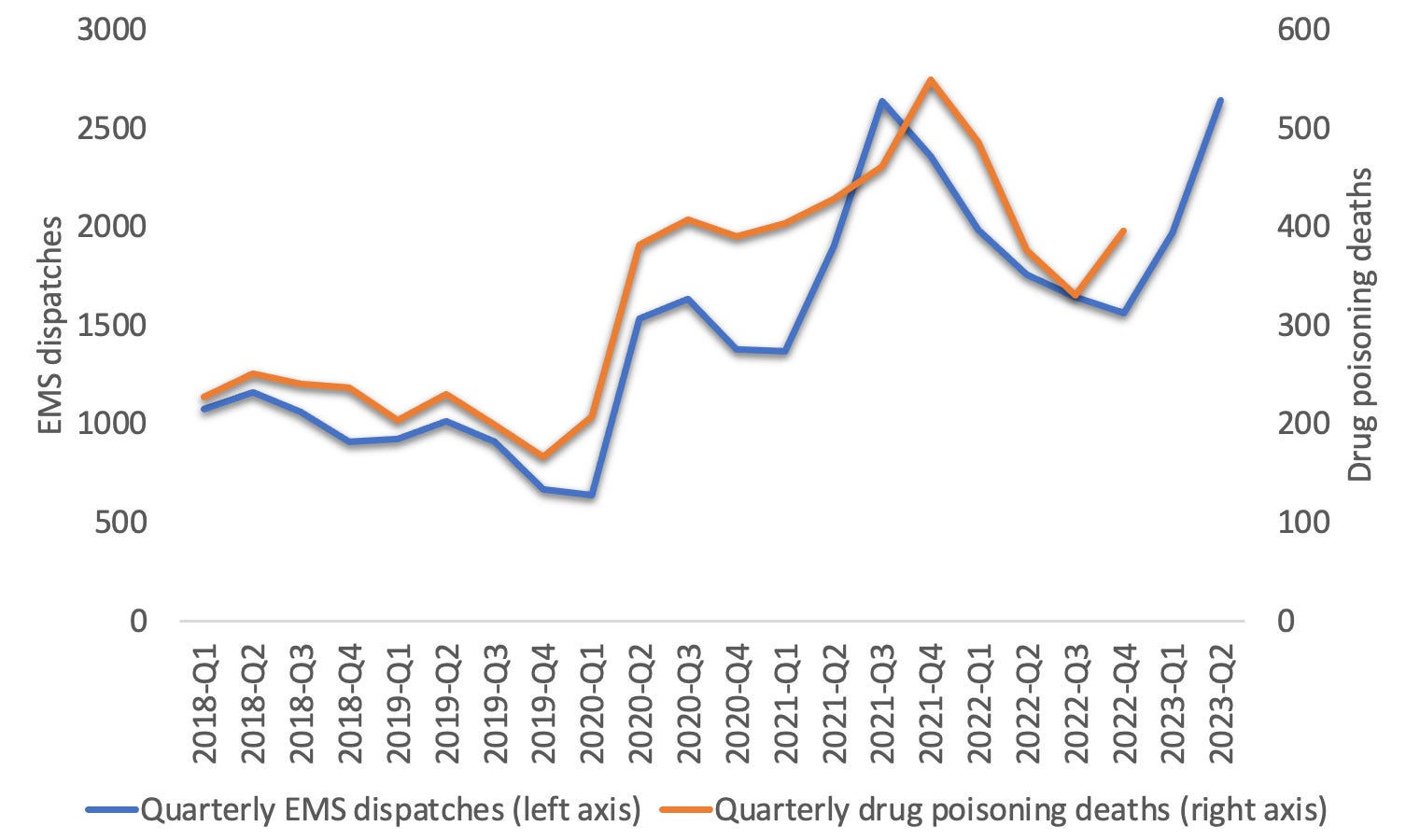
Alberta could be in a new peak of drug poisoning deaths after years spent closing supervised consumption sites, safe supply access and options for people who use drugs. Fentanyl reached an all-time high for relevant involvement with drug deaths at 86.9% in 2022, which appears to hold in 2023. Meanwhile, “Other opioids” including hydromorphone have bottomed out in relevance to drug deaths at around 20% after a 10-year decline.
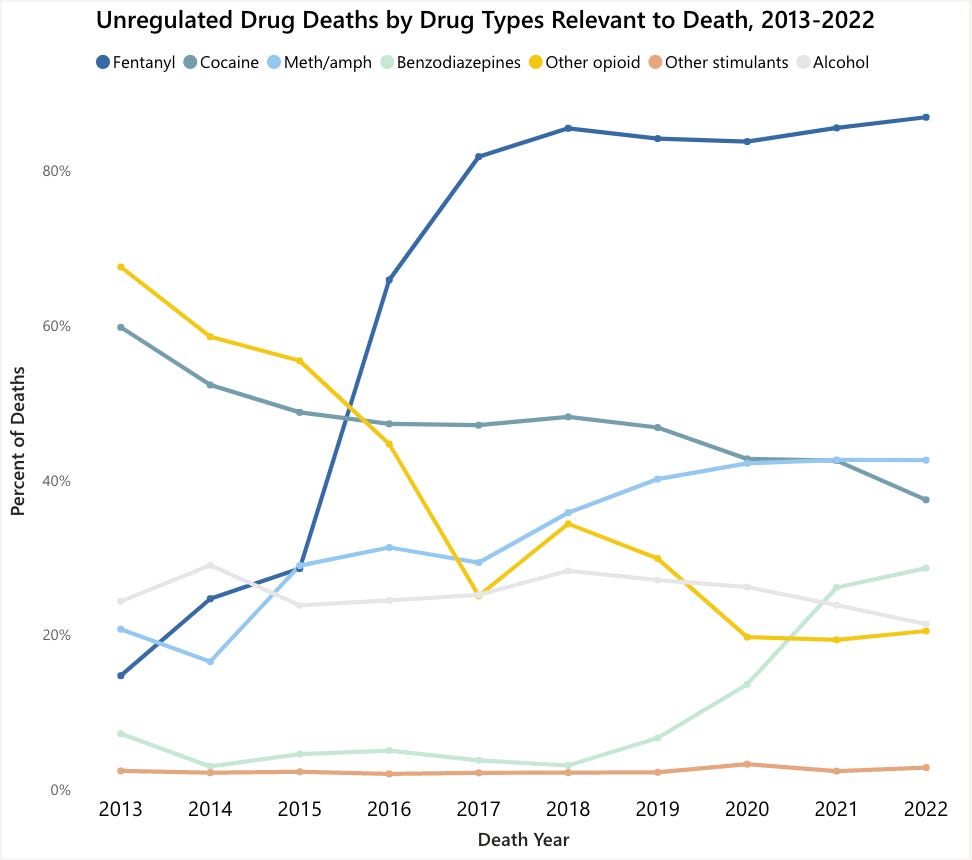
Source: BC Unregulated Drug Deaths Summary. Hydromorphone is also not showing up more frequently in rapid toxicology testing, so I’ll repeat the BC Coroner’s key summary message: There is no indication that prescribed safe supply is contributing to unregulated drug deaths.
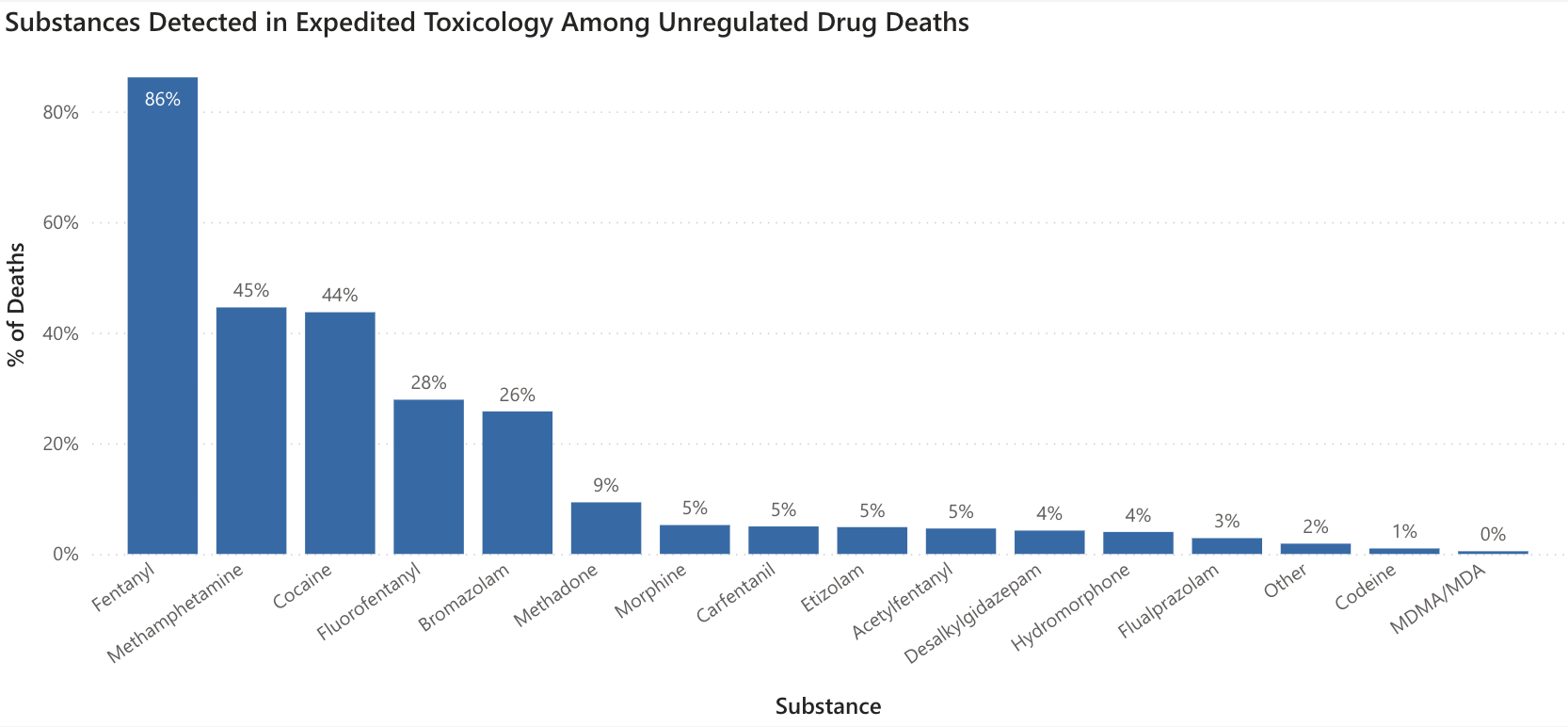
The second report also deals closely with hydromorphone, which is the most often-prescribed opioid in safe supply programs because of its pharmaceutical availability.
Youth Unregulated Drug Toxicity Deaths in British Columbia
This report focuses on the drug toxicity deaths that occurred among children under the age of 19 from 2017 to 2022. Drug poisoning is now the leading cause of unnatural death in this age group.
There were 36 drug toxicity deaths among people under 19 in 2022, which represents 1.6% of all drug toxicity deaths.
This youth death rate has increased more than 450% from 2012 to 2022, setting records in 2021 and again in 2022.
The crisis is currently most acute on Vancouver Island and Fraser regions.
73% of youth are dying during or following involvement with the Ministry of Children and Family Development. In Alberta, 80% of the children dying in provincial care are Indigenous. A group of us wrote how the drug poisoning crisis begins to look like genocide when you add this up with other patterns.
Fentanyl was detected in 79% and stimulants in 55% of deaths, reflecting broader population trends.
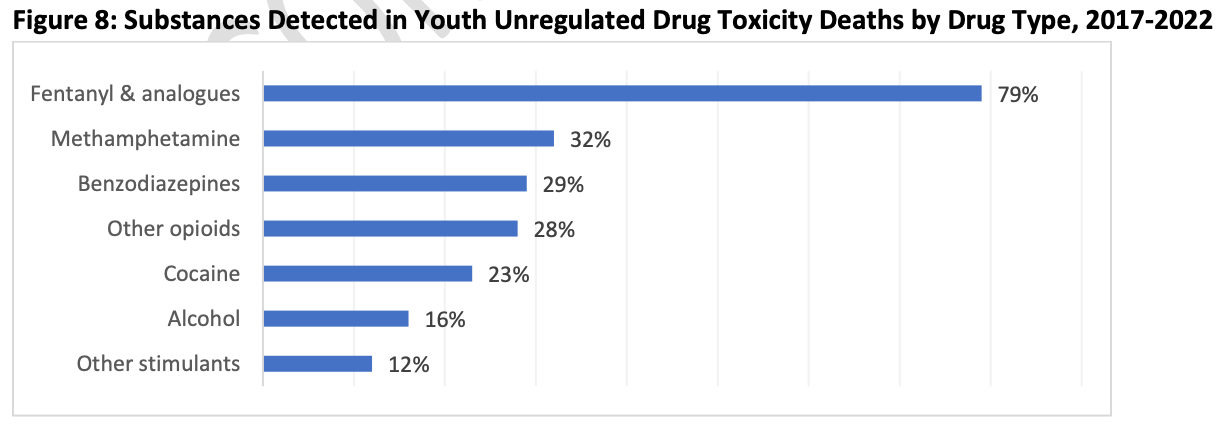
Source: Youth Unregulated Drug Toxicity Deaths in British Columbia. There were zero deaths among people under 19 in which hydromorphone was detected on its own from 2017 to 2022. This underscores the BC Coroner’s Service point from the broader summary discussed above that emphasizes safe supply prescribing is not contributing to deaths in any age group.
Hydromorphone was detected in 12 deaths of people under 19, always in combination with some combination of fentanyl, stimulants, alcohol, benzodiazepines, or other opioids.
Hydromorphone can show up falsely in these analyses as a byproduct of other opioids including morphine, codeine and hydrocodone. This means hydromorphone-related deaths are an over-estimate.
Unfortunately, the line that will be circulated by prohibition profiteers is that “Hydromorphone was detected in 12 youth deaths.” If you seek to convey a moral panic that children are accessing safe supply or government-funded drugs are flooding the streets, this is the only line you’ll read and amplify.
We can’t help that. These people are causing death and seem to be alright with it.
What we can do is to glue people’s eyeballs to the bigger picture: that lack of regulation continues to be responsible for almost every drug death, and that aggressively expanding safe supply access while decriminalizing possession is the quickest path to mitigating these preventable deaths. This is because police drug enforcement causes death and because people usually don’t have the means to know the strength or composition of the drugs they are taking.
Safe supply. Decriminalization. And build some public housing already.


